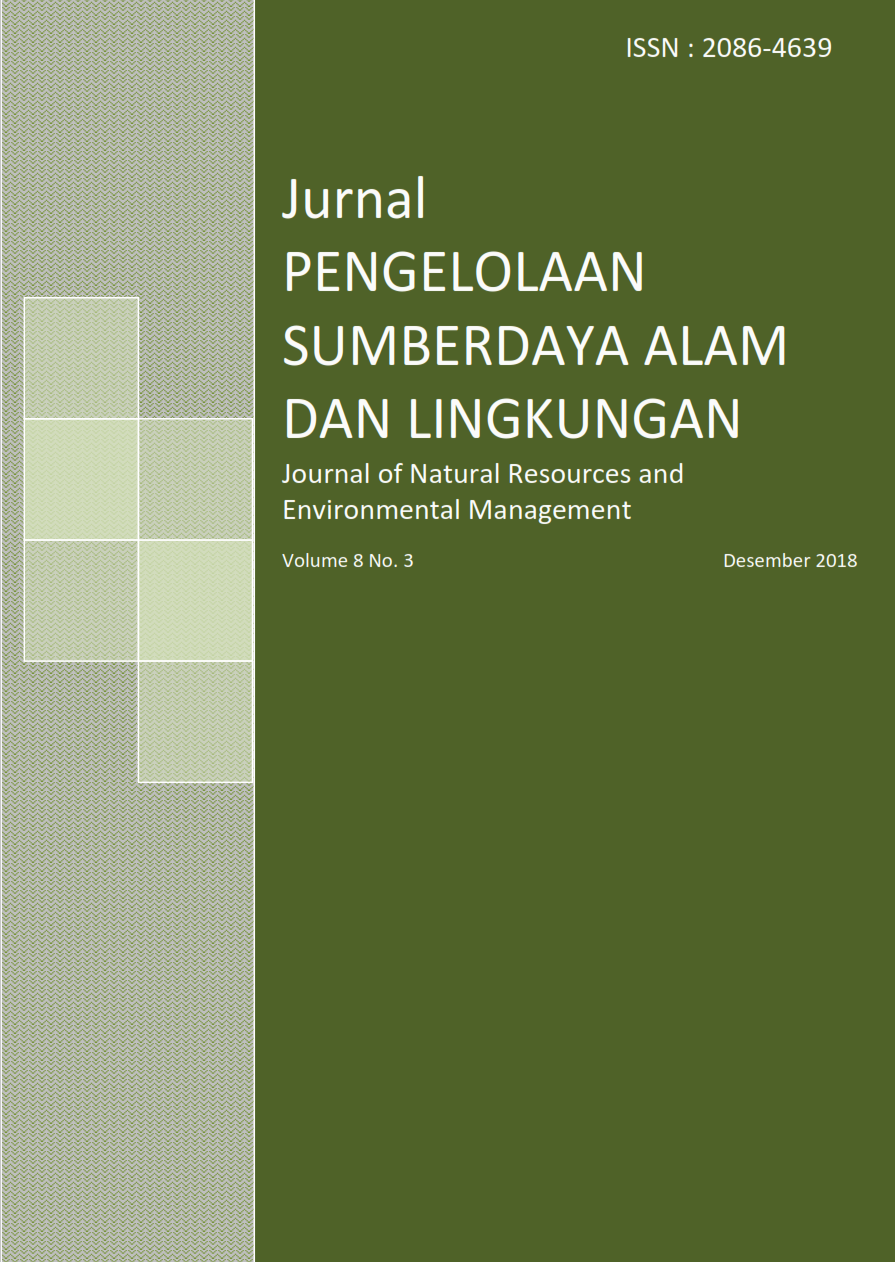SAMPLING DESIGN FOR WATER QUALITY MONITORING IN MARINE RESERVE : A STUDY CASE AT BANDA SEA CONSERVATION PARK
Abstract
References
Caeiro, S., Painho, M., Goovaerts, P., Costa, H., S. Sousa, 2003. Spatial sampling design for sediment quality assessment in estuaries. Environmental Modelling & Software, 18(10), pp.853-859.
Dheenan, P.S., Jha, D.K., Das, A.K., Vinithkumar, N.V., Devi, M.P. and Kirubagaran, R., 2016. Geographic information systems and multivariate analysis to evaluate fecal bacterial pollution in coastal waters of Andaman, India. Environmental Pollution, 214, pp.45-53.
De'ath, G., K. Fabricius, 2010. Water quality as a regional driver of coral biodiversity and macroalgae on the Great Barrier Reef. Ecological Applications, 20(3), pp.840-850.
Duprey, N.N., Yasuhara, M., D.M. Baker, 2016. Reefs of tomorrow: eutrophication reduces coral biodiversity in an urbanized seascape. Global change biology, 22(11), pp.3550-3565.
Fu, S., C.Y. Wei, 2013. Multivariate and spatial analysis of heavy metal sources and variations in a large old antimony mine, China. Journal of soils and sediments, 13(1), pp.106-116.
Harris, L.A., Hodgkins, C.L.S., Day, M.C., Austin, D., Testa, J.M., Boynton, W., Van Der Tak, L. and Chen, N.W., 2015. Optimizing recovery of eutrophic estuaries: impact of destratification and re-aeration on nutrient and dissolved oxygen dynamics. Ecological Engineering, 75, pp.470-483.
Hedley, J.D., Roelfsema, C.M., Chollett, I., Harborne, A.R., Heron, S.F., Weeks, S., Skirving, W.J., Strong, A.E., Eakin, C.M., Christensen, T.R., V. Ticzon, 2016. Remote sensing of coral reefs for monitoring and management: a review. Remote Sensing, 8(2), pp.118-168.
Huang, J., Yin, H., Chapra, S.C. and Zhou, Q., 2017. Modelling Dissolved Oxygen Depression in an Urban River in China. Water, 9(7), p.520.
Jin, Q., Lu, J., Wu, J. and Luo, Y., 2017. Simultaneous removal of organic carbon and nitrogen pollutants in the Yangtze estuarine sediment: The role of heterotrophic nitrifiers. Estuarine, Coastal and Shelf Science, 191, pp.150-156.
Kitsiou, D., Tsirtsis, G., M. Karydis, 2001. Developing an optimal sampling design. A case study in a coastal marine ecosystem. Environmental Monitoring and Assessment, 71(1), pp.1-12.
Lam, N.S.N., 1983. Spatial interpolation methods: a review. The American Cartographer, 10(2), pp.129-150.
Maas, S., Scheifler, R., Benslama, M., Crini, N., Lucot, E., Brahmia, Z., Benyacoub, S., P. Giraudoux, 2010. Spatial distribution of heavy metal concentrations in urban, suburban and agricultural soils in a Mediterranean city of Algeria. Environmental pollution, 158(6), pp.2294-2301.
Mattsson, B.J., Zipkin, E.F., Gardner, B., Blank, P.J., Sauer, J.R., J.A. Royle, 2013. Explaining local-scale species distributions: relative contributions of spatial autocorrelation and landscape heterogeneity for an avian assemblage. PLoS One, 8(2), p.e55097.
Panagopoulos, G.P., Angelopoulou, D., Tzirtzilakis, E.E. and Giannoulopoulos, P., 2016. The contribution of cluster and discriminant analysis to the classification of complex aquifer systems. Environmental monitoring and assessment, 188(10), p.591.
Polónia, A.R.M., Cleary, D.F.R., de Voogd, N.J., Renema, W., Hoeksema, B.W., Martins, A., N.C.M. Gomes, 2015. Habitat and water quality variables as predictors of community composition in an Indonesian coral reef: a multi-taxon study in the Spermonde Archipelago. Science of the total environment, 537, pp.139-151.
Sánchez, E., Colmenarejo, M.F., Vicente, J., Rubio, A., García, M.G., Travieso, L. and Borja, R., 2007. Use of the water quality index and dissolved oxygen deficit as simple indicators of watersheds pollution. Ecological Indicators, 7(2), pp.315-328.
Shoji, S. and Takahashi, T., 2002. Environmental and agricultural significance of volcanic ash soils. Global Environmental Research, 6(2), pp.113-135.
Tomascik, T., Van Woesik, R. and Mah, A.J., 1996. Rapid coral colonization of a recent lava flow following a volcanic eruption, Banda Islands, Indonesia. Coral Reefs, 15(3), pp.169-175.
Wang, Y., Zhang, X., C. Huang, 2009. Spatial variability of soil total nitrogen and soil total phosphorus under different land uses in a small watershed on the Loess Plateau, China. Geoderma, 150(1), pp.141-149.
Ward, R.C., Loftis, J.C., G.B. McBride, 1986. The “data-rich but information-poor” syndrome in water quality monitoring. Environmental management, 10(3), pp.291-297.
Authors
Authors who publish with this journal agree to the following terms:
- Authors retain copyright and grant the journal right of first publication with the work simultaneously licensed under a Creative Commons Attribution License that allows others to share the work with an acknowledgement of the work's authorship and initial publication in this journal.
- Authors are able to enter into separate, additional contractual arrangements for the non-exclusive distribution of the journal's published version of the work (e.g., post it to an institutional repository or publish it in a book), with an acknowledgement of its initial publication in this journal.
- Authors are permitted and encouraged to post their work online (e.g., in institutional repositories or on their website) prior to and during the submission process, as it can lead to productive exchanges, as well as earlier and greater citation of published work (See The Effect of Open Access).






